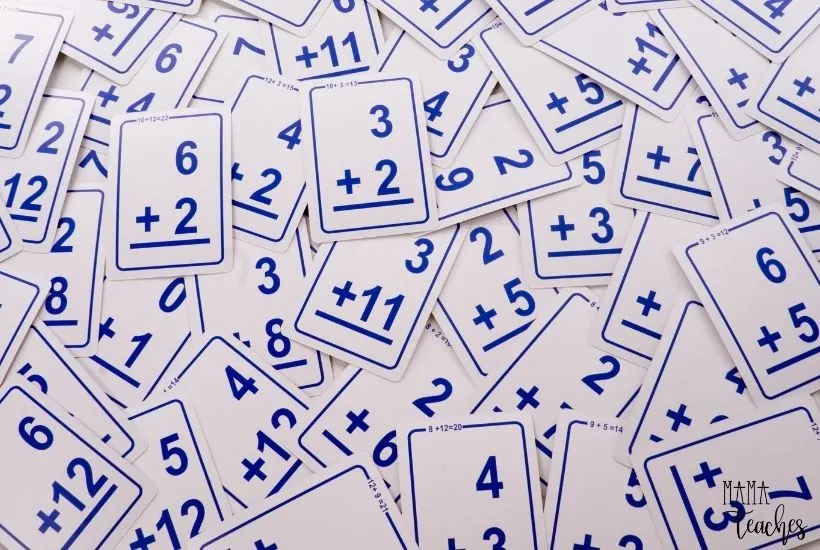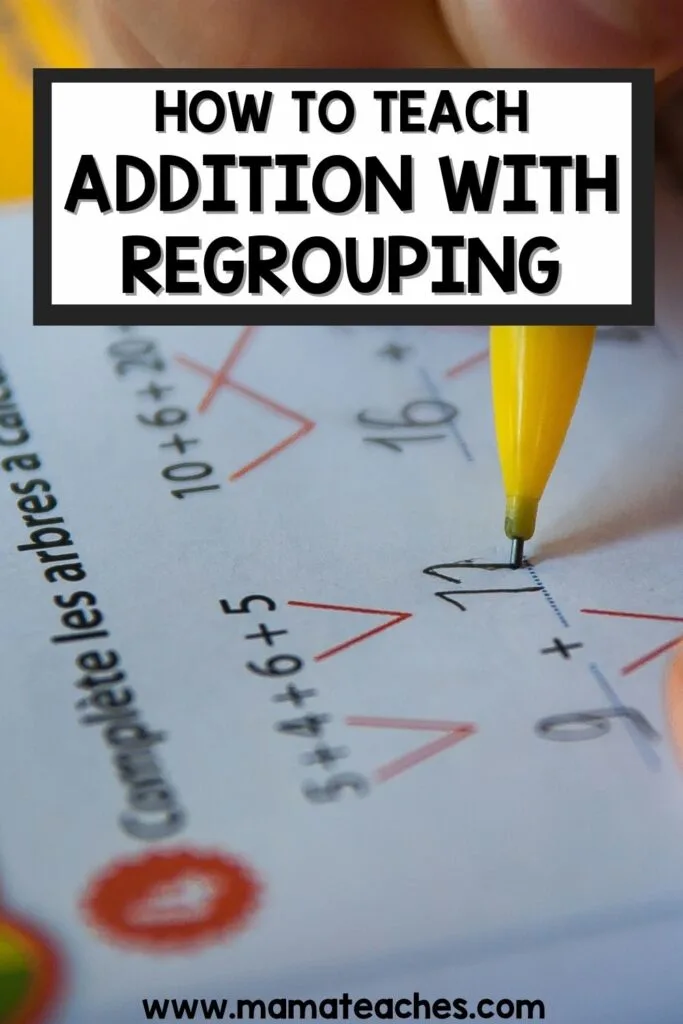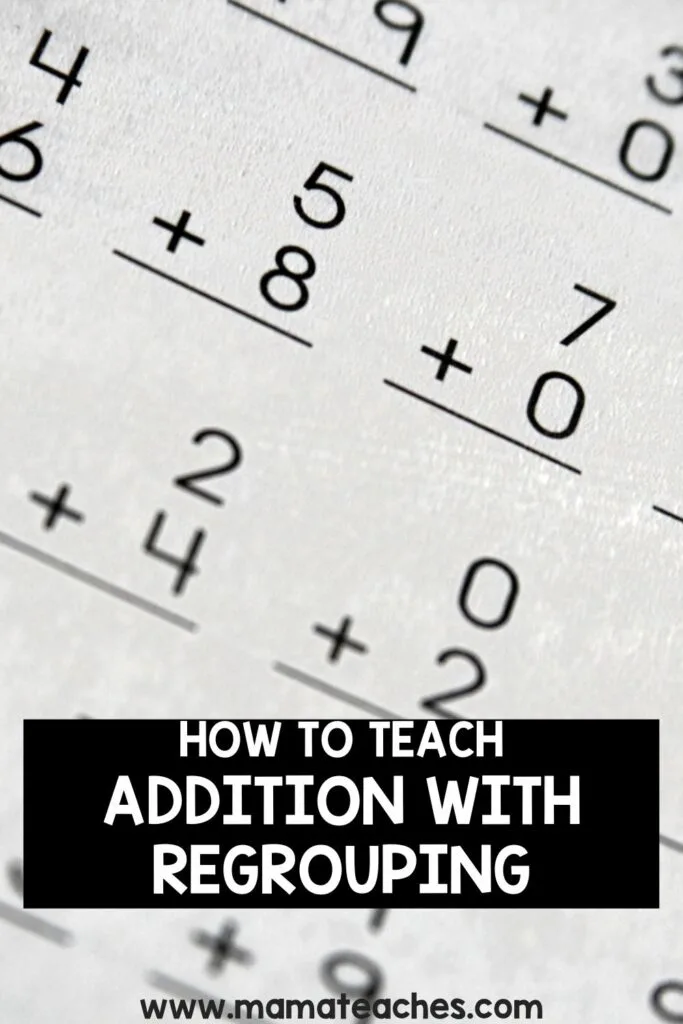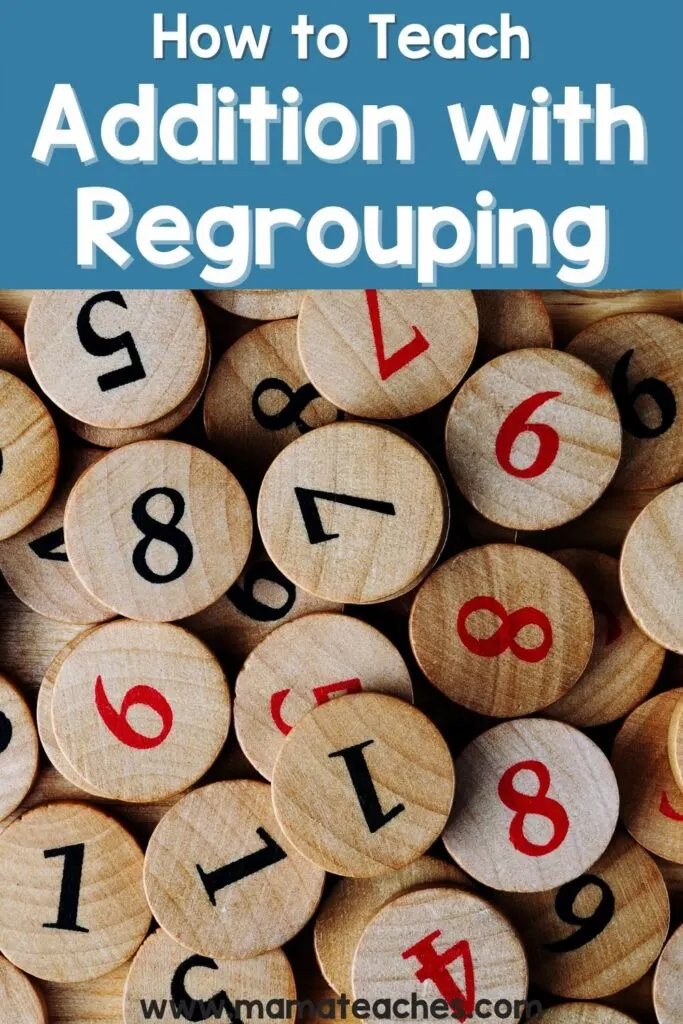Adding multi-digit numbers can be a brainbuster until you learn addition with regrouping. Open the floodgates to higher sums by learning how to teach addition with regrouping to your kids.

What Is Addition with Regrouping?
When you first learn to add, you work with single-digit numbers, like 2+2= 4. Then you kick it up a notch by adding numbers whose sums are larger than 10, like 5+7=12. Even at this second stage, you can use regrouping. Regrouping involves making groups of 10s to solve an addition (or subtraction) problem.
Let’s look at the simple math problem of 5+7. The number 7 can be regrouped as 5+2. So you can think of the problem 5+7 as 5+5+2 instead. Quickly you see that 5+5=10. So what is left? 10+2. That is easy to add: 12.
I know what you’re thinking, “That’s awfully labor-intensive for a simple math problem like 5+7.” But these small numbers are just the beginning. When you add multi-digit numbers, you can try to count on in your head (an exhausting feat), or you can use regrouping to make it simpler to solve.
You stack the numbers one on top of the other, line them up by place value, and add each column. If one column makes a sum greater than or equal to 10, you regroup the number and place the extra ten in the column to the left. (This process is sometimes called carrying.)
When to Teach Addition with Regrouping
Before you even consider teaching addition with regrouping, the child needs to have a firm understanding of place value. You can download a free place value chart in the Freebies Library.
When we write numbers, each digit represents a value. The number 319 has three digits, but the 3 is in the hundreds place, which means its value is 300.
Another foundational concept is knowing the addition math facts. If a child cannot quickly recall 5+4=9 or 9+6=15, he is not ready for addition with regrouping.
Yes, children can reason their way through basic addition with strategies such as counting on, but addition with regrouping is a big leap for most students.
Let him have his math facts firmly under his belt before you ask him to tackle this concept.

Addition with Regrouping Strategies
Some people teach regrouping without teaching the underlying concept, but this ultimately hinders the child’s learning. Start by using manipulatives like linking cubes or place value disks to make groups of tens with leftover ones.
The next step is using a place value chart (You can find a FREE one in the Freebies Library!). Represent a two-digit number with place value disks and put the disks in the correct column of the place value chart.
For example, to represent the number 28, put 8 ones disks in the ones column, and two 10s disks in the tens column.
Then add a second number (start out with a single-digit number).
For example, add 5 ones to your ones column. You are now representing the problem 28+5.
Starting with the one column, regroup the disks to make a ten and any remaining ones. Move the new ten disk to the tens column. Count the resulting number.
For example, gather 10 ones from the ones column and exchange them for a 10 disk. Move this disk to the tens column. Now you have 3 tens disks and 3 ones disks. That is the answer: 33.

Fun Activities to Teach Addition with Regrouping
Adding with regrouping is a mental leap from concrete math, so, in the beginning, make the process as hands-on as possible.
Place Value Virtual Escape Room
This FREE virtual escape room reinforces the concept of place value, a necessary precursor to addition with regrouping.
Magnet Math
Place value disks are wonderful, but they can slide everywhere. Eliminate the mess by using a magnetic board as your place value chart and these magnetic place value disks.
Color Columns
Try writing the place values in different colors, or placing a box around each column. This visual cue can help children click with this concept much sooner.
Coin Columns
Tens and ones you say? Why not let dimes and pennies be your place value counters? Instead of adding abstract numbers, add cents! This real-world application may provide a much-needed spark for some learners.
Linking Cubes
Give the child a set of linking cubes and ask her to represent a number with only single cubes (23 would be 23 separate cubes, none stuck together). Then ask her to regroup them into tens and ones (two tens tower and 3 remaining cubes). You can then add numbers to 23 to make new groups of 10 and higher numbers.
Addition with Regrouping Virtual Escape Room
Once you have taught addition with regrouping, review the concept the fun way with this FREE addition digital escape room. The child will need to know how to use addition with regrouping with two- and three-digit numbers.

Teaching Addition with Regrouping
Addition with regrouping is a strategy that allows us to add large numbers using only our basic addition facts. It’s a very useful tool! Start with a firm foundation in math facts and place value. Then ease your way into the concept with hands-on manipulatives. Follow it up with a fun review, and you’ve got it!
